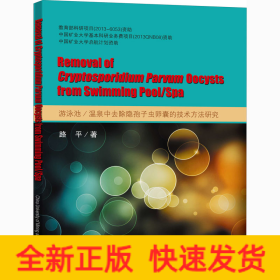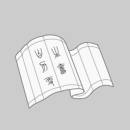
游泳池/温泉中去除隐孢子虫卵囊的技术方法研究
全新正版 极速发货
¥ 14.51 5.6折 ¥ 26 全新
库存2件
广东广州
认证卖家担保交易快速发货售后保障
作者路平
出版社中国矿业大学出版社
ISBN9787564625450
出版时间2014-11
装帧平装
开本16开
定价26元
货号1202318069
上书时间2024-06-28
- 最新上架
商品详情
- 品相描述:全新
- 商品描述
-
作者简介
路平,内蒙古呼和浩特人。博士,在读博士后。从事水资源保护与水处理、土壤与地下水修复、环境污染与公众健康、环境地球化学等方向的研究工作。2012年8月毕业于美国北卡罗来纳大学基础设施与环境系统工程专业(Infrastructure and Environmental system),获得博士学位。2012年至今在中国矿业大学任教,被评为中国矿业大学启航计划培养对象。开设本科课程有环境法学、环境科学概论和Professional English。主持科研课题6项,包括国家自然科学基金青年基金项目、教育部科研项目、中国矿业大学基本科研业务费项目等:近五年发表学术论文20余篇,其中作者和责任作者12篇,被SCI检索6篇。担任Desalination and Water Treatment期刊审稿人。
目录
《游泳池/温泉中去除隐孢子虫卵囊的技术方法研究:英文》目录参见目录图
内容摘要
Cryptosporidium outbreaks in recreational water venues have threatened public health,espely in swimming pools.There is still no reliable treatment technique to remove Cryptosporidium oocysts from swimming pools.The performance of six coagulants and granular materials on Cryptosporidium removal from pools was evaluated.Seeding methods of coagulants and their dosage versus oocysts concentrations were tested.Results indicated oocysts removal efficiency for feeding oocysts and coagulant simultaneously were more than 99%(2log),and continuously feeding of coagulant achieved at least 99%(2log) removals,compared with removal efficiency was 20% by control experiment without coagulation.All of these experiments indicated that the polymer coagulant should be fed by pump automatically and continuously in order to maximize oocysts removals.In addition,oocysts concentration impacted the system performance.The higher oocysts concentration consumed more polymer.Overall,polyDEDMAC and PAX is effective and promising coagulants to improve oocysts removals from swimming pools.Furthermore,granular materials were effective to remove Cryptosporidium but filter pressure was significantly increased.
— 没有更多了 —














以下为对购买帮助不大的评价